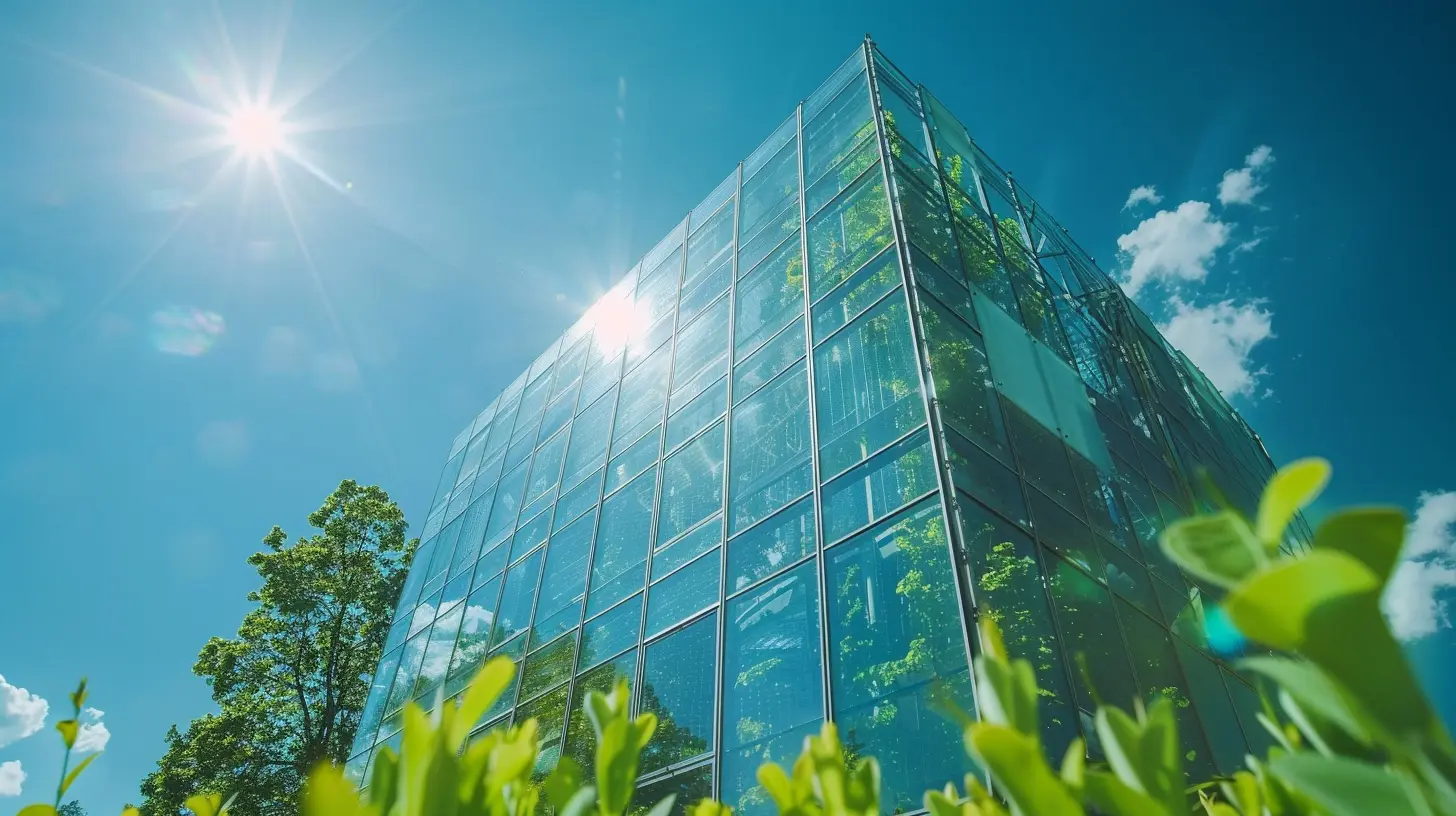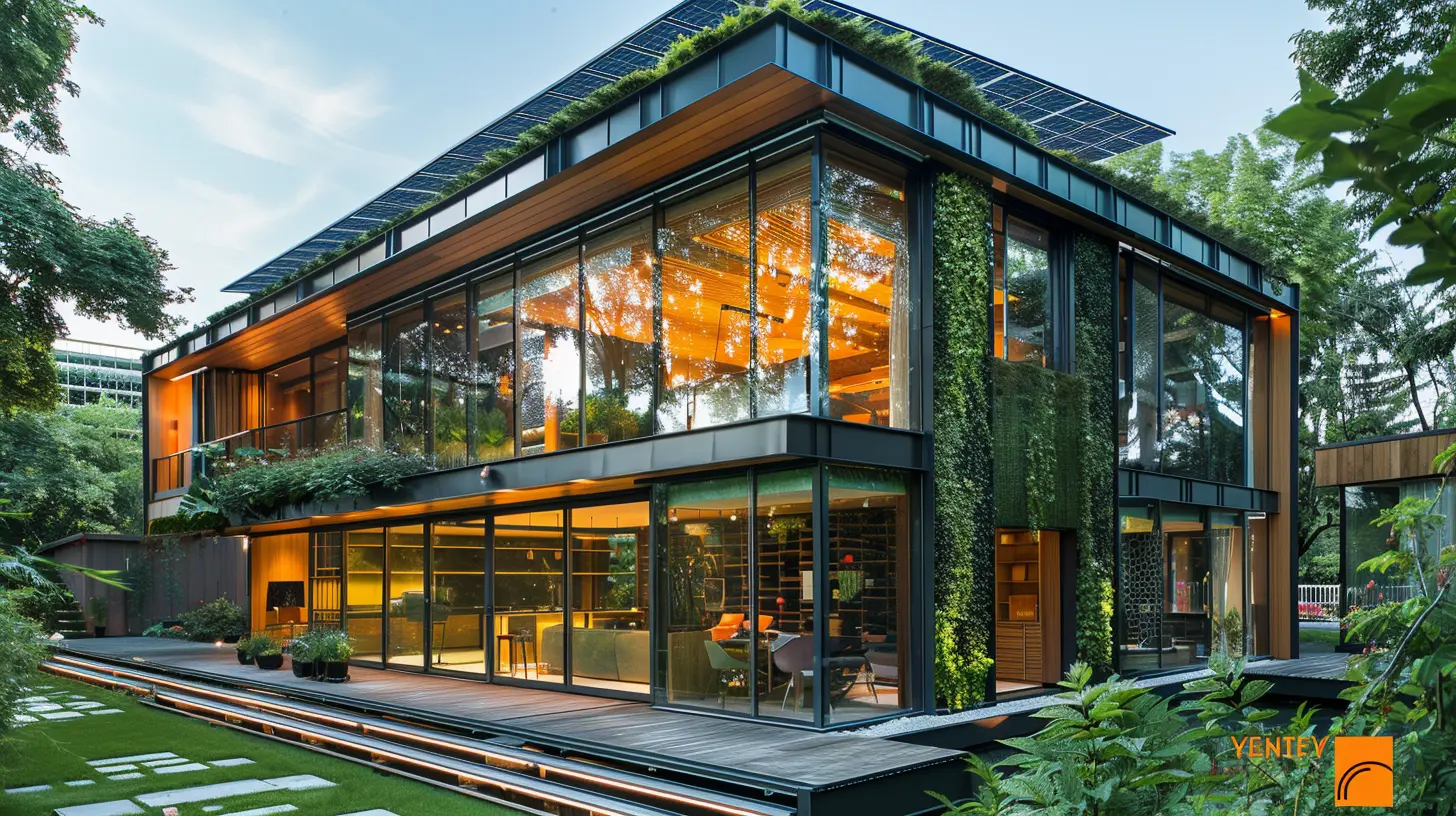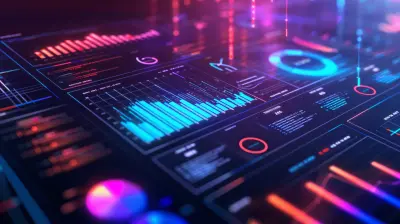How Transparent Solar Panels Are Redefining Eco-Friendly Architecture
16 July 2025
Let’s be honest—when you think of solar panels, you probably picture bulky, blue-black rectangles mounted awkwardly on rooftops. Right? Not exactly what you’d call sleek or stylish. But what if I told you that solar panels are undergoing a glow-up—one that’s not just cosmetic but revolutionary?
Enter transparent solar panels. These slick, futuristic panels are making waves in green architecture—and for good reason. They’ve got the power to turn windows, walls, and even smartphone screens into energy generators. Yep, you read that right.
In this post, we’re diving headfirst into how transparent solar panels are redefining eco-friendly architecture. Spoiler: They’re not just changing how buildings look—they’re flipping the whole sustainability game on its head.
What Are Transparent Solar Panels Anyway?
Let’s break it down. Traditional solar panels are made of photovoltaic (PV) cells that absorb sunlight and convert it into electricity. The problem? They’re opaque. So unless you’re slapping them on a roof or wide-open space, they can mess with the aesthetics of a building.Transparent solar panels, on the other hand, are designed to let light pass through—while still capturing solar energy. Sounds like magic? It’s actually some pretty genius science.
These panels use a tech called Transparent Photovoltaics (TPVs). They don’t absorb visible light the same way traditional solar panels do. Instead, they target invisible parts of the light spectrum, such as ultraviolet (UV) and infrared (IR) light. That means light still comes through the window, but some of it is quietly being harvested for power.
How Do They Work?
Okay, so these things look like glass, but how do they actually generate electricity? Here’s the short version:- UV and IR light hit the transparent surface.
- The material inside the panel absorbs this invisible light.
- That energy is converted into electricity, just like in traditional solar panels.
The trick lies in using materials that are transparent to the human eye but still absorb non-visible light. Think of it like wearing sunglasses that secretly charge your phone while you walk in the sun. Cool, right?
Why Transparent Solar Panels Matter for Architecture
So, why should architects and builders care about see-through solar panels? Because they offer the perfect marriage of form and function.1. Seamless Aesthetics
Let’s face it—people love good design. Transparent solar panels eliminate the need to bolt clunky panels onto beautifully designed buildings. Instead, they can be integrated into the windows, façades, skylights, and glass roofs without compromising the building’s style.Imagine a towering glass skyscraper that’s also a vertical solar farm. That’s not science fiction—it’s fast becoming reality.
2. Increased Surface Area for Energy Collection
With traditional solar tech, you’re limited to rooftops or open land. But what if every window in your office or apartment building could produce electricity? Suddenly, the entire building becomes a giant energy-harvesting machine.More surfaces = more energy.
More energy = smaller carbon footprint.
Simple math, big impact.
3. Energy Efficiency Meets Daylighting
Natural light is a game-changer in sustainable design. It reduces the need for artificial lighting, making buildings more energy-efficient. Transparent solar panels allow sunlight to flow into interior spaces while still generating power. That’s a win-win.Think of it this way: You’re cutting your lighting bill and generating your own electricity with the same window. Talk about multitasking.
4. Versatility and Retrofitting
Transparent solar tech isn’t limited to new builds. It can be retrofitted on existing structures, turning energy-hungry buildings into power-generating ones.Old shopping malls, universities, airports—you name it. All can benefit from this retrofit revolution.
Real-World Examples of Transparent Solar in Action
Transparent solar panels aren’t just lab experiments anymore. They’re already making their debut in impressive projects around the world.Michigan State University
Researchers at MSU have developed completely transparent solar concentrators, designed to look exactly like regular glass. They’ve already been tested on windows, greenhouse roofs, and even car windows. The long-term goal? Replace every glass surface with a power-producing one.Copenhagen International School
This modern architectural marvel uses over 12,000 colored photovoltaic glass panels. While not fully transparent, the panels still allow light in while generating energy—enough to cover more than half the building’s electricity needs. It’s a glimpse at what's possible when aesthetics and sustainability collide.Seoul’s Solar Bus Shelters
In South Korea, solar-powered bus stops use transparent solar panels on their roofs to power lights, charging ports, and even Wi-Fi. Small-scale? Sure. But it shows the tech’s potential for everyday infrastructure.Challenges Holding Transparent Solar Panels Back
No superhero tech is without its kryptonite. Transparent solar panels are jaw-dropping, but they’re not perfect yet.1. Lower Efficiency Rates
Right now, transparent panels generate less power per square foot compared to traditional panels. Why? Because they’re absorbing only part of the light spectrum.But don’t lose hope. Efficiency is increasing year by year as research continues. It’s only a matter of time before this tech catches up.
2. Higher Costs (For Now)
Being relatively new tech, transparent solar panels are more expensive to produce and install. This makes large-scale adoption a bit tricky, especially for smaller budget projects.But remember how expensive flat-screen TVs were 20 years ago? Now they’re in every household. The same will likely happen here as manufacturing scales up.
3. Durability and Lifespan
Because the materials are lighter and sometimes more delicate, researchers are still working on improving long-term durability and weather resistance—especially in harsh environments.What the Future Holds
Here’s where things get really exciting.Smart Buildings Powered by Their Own Windows
Imagine buildings where the glass does more than let light in. Air quality sensors, climate control, automatic dimming shades—and it’s all powered by transparent solar tech embedded in the windows themselves.That’s not just smart. That’s genius architecture.
Solar-Powered Smartphones and Wearables
Yep, it’s not limited to buildings. Transparent solar tech is being explored for mobile devices, screens, and wearables. Imagine never needing to charge your smartwatch again because the screen itself becomes the charger.Energy-Neutral Cities
This is the big dream. By embedding solar tech into every glass surface, from office buildings to public transit, we could build cities that generate as much energy as they consume.It’s not just “net zero”—it’s beyond zero.
How This Shift Impacts Eco-Friendly Architecture
Here’s the bottom line: Transparent solar panels aren’t just another green gadget. They’re a paradigm shift.They make it easier for architects to hit LEED certifications, reduce operating costs, and contribute to carbon neutrality—all without compromising aesthetics.
It’s the ultimate tool for sustainable urban planning, allowing cities to grow without increasing their environmental footprint.
And best of all? It empowers homeowners, business owners, and entire communities to be part of the renewable energy movement—without sacrificing design or function.
Don’t Wait for Tomorrow
Look, the future of architecture is already knocking at the door—and it’s knocking on a glass window that makes its own power.If you’re in design, construction, or even facility management, now’s the time to pay attention. Transparent solar panels aren’t just cool—they’re the kind of innovation that will set your projects apart and future-proof your designs.
Because let’s be real: Who wouldn’t want a building that powers itself and still looks like it stepped out of a high-end design mag?
Final Thoughts
The rise of transparent solar panels is more than a tech trend—it’s a cultural shift in how we think about energy and design. Gone are the days when you had to choose between sustainability and aesthetics. Now, you can have both.So whether you’re building a skyscraper in Manhattan or renovating a school in rural Texas, keep transparent solar in your toolkit. The future of eco-friendly architecture is clear. Literally.
all images in this post were generated using AI tools
Category:
Environmental TechAuthor:

Jerry Graham
Discussion
rate this article
1 comments
Raina Stone
This article highlights the innovative potential of transparent solar panels in sustainable architecture, merging aesthetics with renewable energy solutions for a greener future. Great read!
July 25, 2025 at 3:12 AM

Jerry Graham
Thank you for your feedback! I'm glad you found the article insightful on the innovative role of transparent solar panels in sustainable architecture.


